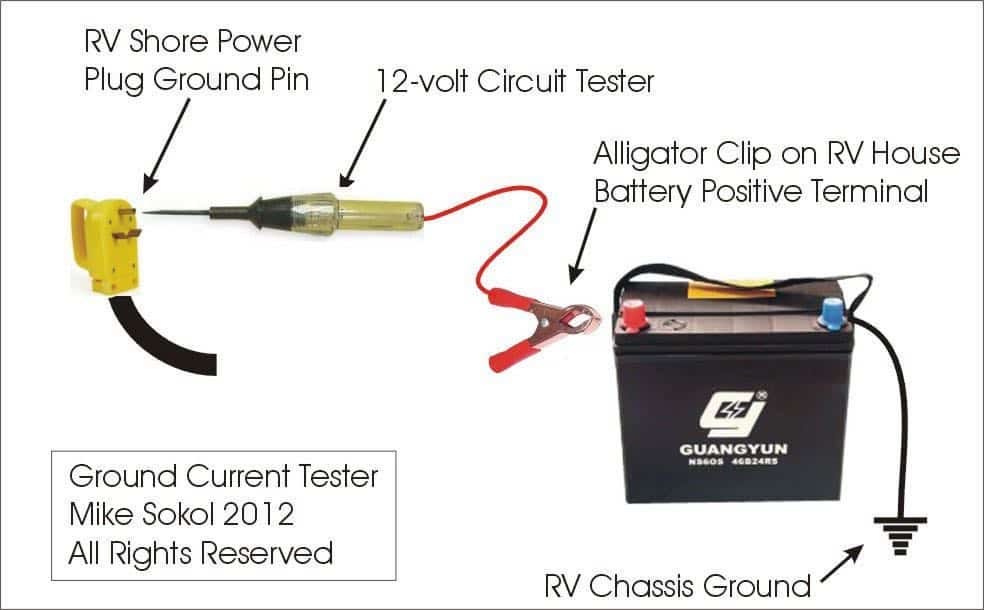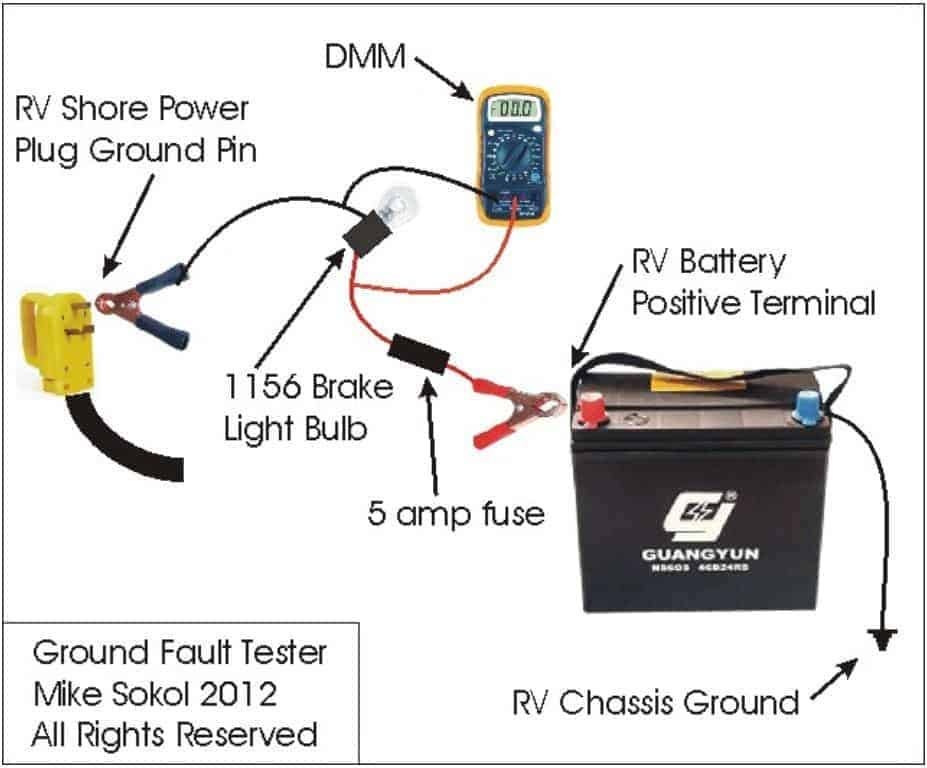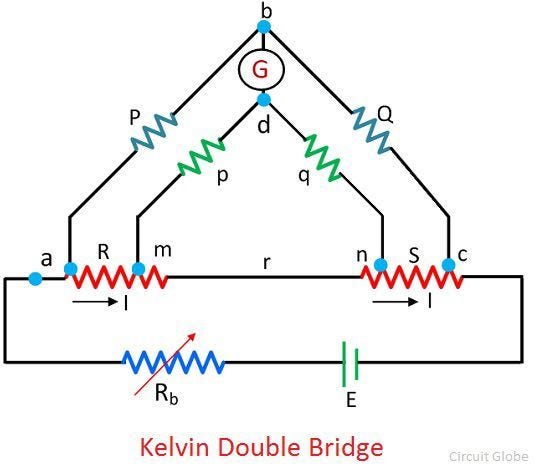How to test your RV for a proper chassis ground bond!
Let’s go down the rabbit hole with some advanced testing procedures…
Dear Mike,
You talk a lot about RV grounding and bonding, and I understand that the frame of the RV is supposed to be connected to the green ground wire. But exactly how is the ground wire connected to the RV frame and is there a definitive test for this? —Eddie
Dear Eddie,
Yes, you are correct that the green ground wire of the shore power plug is supposed to be connected to the RV frame. Technically, this ground wire is named the EGC (Equipment Grounding Conductor) and connecting the metal parts of your RV together is called “bonding.”
What you’re doing is “bonding” the frame of the RV to the EGC which is then bonded to the neutral bus of the main service panel through the shore power wiring and pedestal. And on the surface, it seems simple. You just connect the incoming green wire to the frame using a bolt through the metal. However, the reality is that there’s a more complex situation.
Just how do you test the wire bond to make sure it’s a solid connection? Any corrosion or loose connection at the EGC bonding point will defeat the EGC safety connection. Even paint on the frame that wasn’t removed properly around the bonding point will interfere with the low-resistance connection that’s needed for a proper safety ground. But because ohm meters use very little test current, they don’t test the ability of the EGC bond to be able to carry sufficient fault current to trip the circuit breaker.
Better Testing
So is there a definitive way to test for this connection, as important as it is? Sadly, J don’t know of any affordable test gear to do your own field test, and as far as I can see there’s no automated process in use by any RV manufacturer that I’ve discussed this with. However, I’ve designed a simple tester you can build and use yourself for checking your RV EGC bonding path to the vehicle frame. See the diagram below.
This is based on an old test I used to do on 12-volt battery systems in cars, and with a little tweaking it works great for testing an RV for a proper EGC ground-bond. The key part of the test is a basic 12-volt circuit tester you can get in any auto parts store for $10 or so. Make sure you get an old-school incandescent version that will draw a few watts at least. LED testers draw very little current and won’t load the circuit sufficiently for definitive testing. We’ll be using it backwards for this test, so please follow along carefully.
Instead of connecting the test light’s alligator clip to the frame of the RV, you’ll be connecting it to the 12-volt positive terminal of the house battery. When you touch the point of the tester to the frame the light should come on brightly. Once you’ve got that far, then you’re ready for the actual test.
Step 1
With the shore power plug disconnected from power and any generators turned off, you can now place the tip of the tester on the ground pin of the shore power plug. Since this wire is supposed to be connected to the RV frame, the light should come on brightly again. While you’re connected to the ground pin and watching the light, go ahead and shake the shore power wire and make sure the light stays bright and doesn’t blink. If it does blink or flicker that’s a sure sign there’s a break in the wiring somewhere.
Step 2
Next, add on whatever dog-bone adapter you may use, and test for a solid light (good continuity) at that connector. The light should stay bright and not flicker or dim even when you twist and flex the wires. Finally, add on whatever extension cords you may use and connect the tester to the ground pin at the end of the line. The test light should stay bright and not blink. If there’s any dimming or blinking at all, that’s a signal of a break or corrosion somewhere in the wiring.
A more advanced test
Because I like accuracy, here’s a sneak peek at my advanced test which can measure down to a fraction of an ohm. Basically you measure the voltage across the battery and compare it with the voltage across the test bulb. Both voltage measurements should be virtually identical. If not, then there’s a voltage drop somewhere in your ground conductor path, and that’s the sign of a poor connection that can fail if it needs to carry fault current.
These tests are far superior to just using an ohmmeter since they drive a few amperes of current through the ground-bond connection, which is what the EGC needs to do if there’s a fault current path in your RV. And because it’s only 12-volts DC, it’s a perfectly safe test for you to perform. But please take all safety precautions and use safety glasses and don’t leave the brake-light bulb running unattended. That’s because the bulb can get hot and possibly melt anything it contacts.
Using a 4-wire Kelvin Bridge
This ain’t cheap, but here’s my 4-wire Kelvin bridge meter that costs $600 but is accurate down to 0.01 ohms. The Greenlee CLM-1000 is normally used for measuring the length of wire on huge spools without unrolling it. But I use it a bit differently…
This 4-wire meter automatically nulls out the length of the test leads during a calibration sequence. In fact I’ve added 150 ft of 16-gauge extension wire to the test clamps and was still able to measure down to 1/100th of an ohm. Here’s what’s going on under the hood of a Kelvin Bridge.
I used to use a Kelvin Bridge to measure missile guidance system components back in the ‘80s. But more on using a Kelvin Bridge for advanced testing later…
Sure Test Circuit Analyzer
More on this in a future article, but the Ideal Sure Test Circuit Analyzer with optional ground breakout cable is a great piece of test gear for RV ground bond testing. But that’s an RV repair shop level of investment.
These are advanced troubleshooting tests
You don’t need to do this level of testing all the time, but if you’ve felt a hot-skin shock and standard resistance tests don’t point to the source of the problem, this test procedure can save you hours or even days of troubleshooting. I’ve been called into RV dealership/shops to find the cause of a hot-skin shock that eluded RV technicians for weeks. A solid Chassis to EGC Ground is the most important connection in your RV.
Let’s play safe out there…. Mike











Hi Mike - I like the 12V battery test concept. One question... for those of us with motorhomes, where the CHASSIS battery is likewise connected to the frame, is this still a "useable" test? I am presuming so, since the test lamp is connected to the HOUSE battery, but figured I'd run it by you! Thanks, as always! Scott
That is supposed to be like.
Also, in the bulb test, since more current is desirable, would it be worthwhile to put 2 bulbs connected in parallel (in some sort of mount for safety), or would that just confuse the voltage measurement?